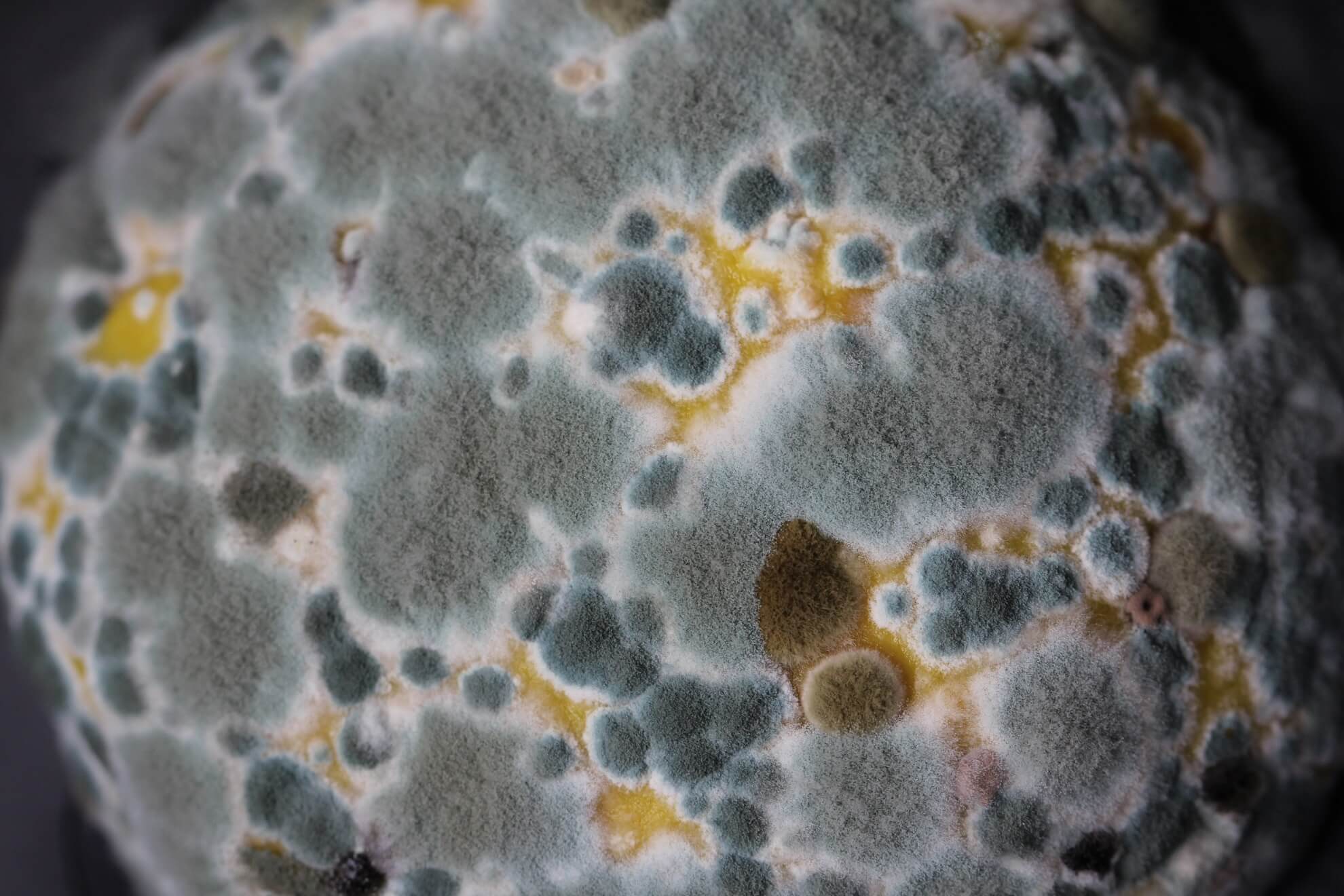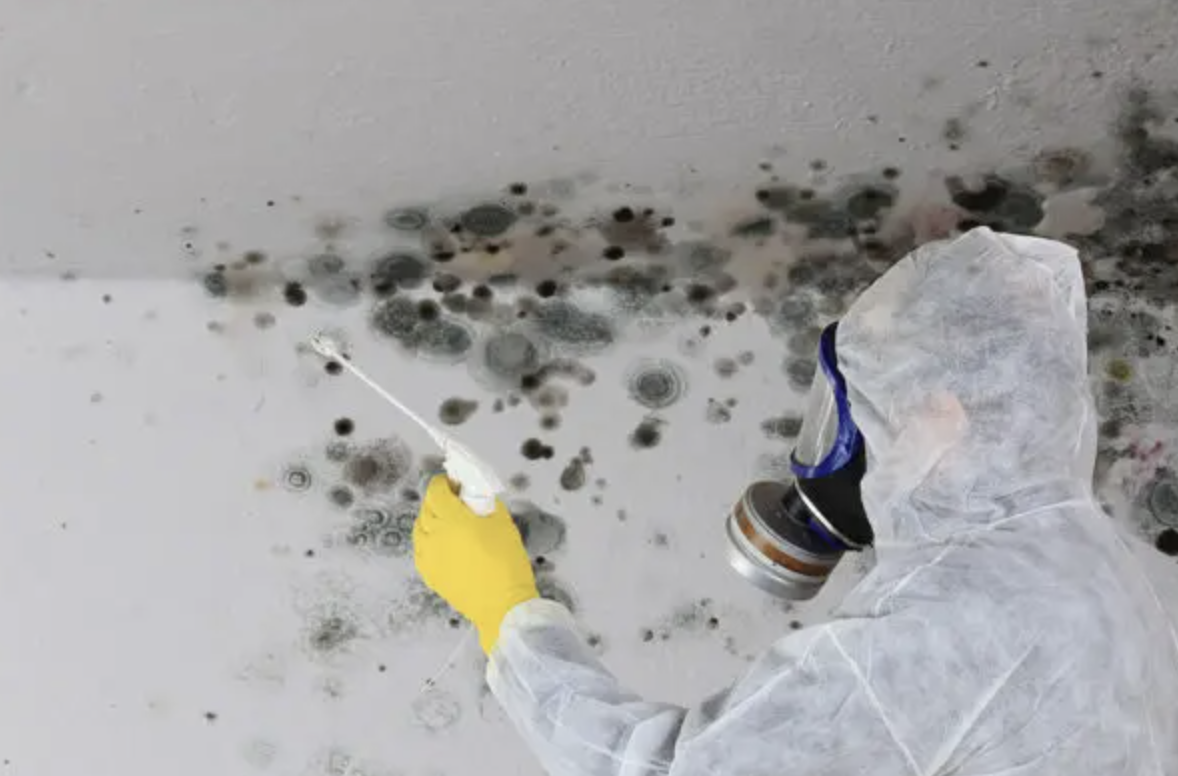Article by Joshua Kent
Moisture Master Pros OwnerThere are many facts and myths about dry mold. When you think of dry mold spores around the home, you may think of something crusty you found on a surface and crushed into a fine powder with your hands, but it’s not harmful, right? Common belief may suggest that mold does not pose a risk when dry, but that’s not entirely true.
Science tells us that mold DOES NOT die when it dries out; instead, it becomes dormant and can reactivate in the presence of moisture, allowing mold to grow again. Dry mold spores can also become airborne, posing potential health risks as they spread through the air.
Mold and mildew are a menace to walls, wood, and flooring. It might be manageable for you to eliminate mold if they stopped there, but they don’t! If left untreated, mold can still cause a range of significant health issues. Mold spores in the air are known to elicit uncomfortable symptoms, including allergenic, pathogenic, and even toxigenic reactions.
In this guide, you’ll delve into what happens to mold when it dries out and learn how you can prevent a mold problem, including when to consider a professional mold remediation service to protect your health.
Here’s everything you need to know to find mold and begin taking care of mold in your surroundings today.
What Causes Mold Growth?
The two main factors responsible for mold growth are water and food. Damp surfaces and organic material provide a suitable habitat for mold to thrive and form a colony. Wood is a key organic ingredient that supports mold growth when moisture is present.
While mold may reproduce in homes and other structures, it may not necessarily be harmful. In most cases though, they water damaged materials, structures, or household items; however, some people are sensitive to mold but may not be aware of it. Exposure to mold variants that release toxins and poisons can cause health problems, such as allergic reactions or severe respiratory problems.
Dry conditions may not kill mold, as some people believe. This is because mold dries and can hibernate in dry conditions, waiting for more moisture and a humid atmosphere to resume reproduction.
Some molds are able to remain dormant for a few years – up to a hundred – until the right conditions return. Even after mold stops spreading around your house, you still have to remove it because the dormant and temporarily inactive spores will pick up growth once the right circumstances are present.
Mold thrives in places where there isn’t proper ventilation and steam (or vapor) droplets hang in the air. Warm air absorbs moisture more easily than cold air; therefore, avoid a high humidity level. The ideal relative humidity for mold to grow needs to be outside the 30 to 50 percent range. Having exhaust fans in typically moist areas such as bathrooms, kitchens, and laundry rooms can help to minimize more moisture.

How Long Can Mold Live Without Moisture?
If there isn’t a moisture problem, would mold die when it dries? Mold needs a little but steady supply of water and organic materials to grow, reproduce, and multiply. If you deprive them of these, they tend to dry out, stay dormant, and reduce their infestation.
Humidifiers help to lower the humidity level indoors, but does mold die when it dries out in sunlight? Good solar energy and cross-ventilation would ensure currents of dry air flow in a home while moist air leaves from windows.
These measures can help in many cases to prevent mold from your home, but there’s no guarantee that it won’t happen again. Active molds are known to thrive even in these conditions, meaning a mold can remain dormant depending on the mold variant involved.
The key is to work towards eliminating the source of the mold, such as if there was any sign of water intrusion. Mold-repelling chemical agents, sanitizers, and active cleaners are capable of taking care of mold sources. Bleach or hypochlorite solutions are especially effective in eliminating mold growth and sporulation. It’s advisable to conduct this thorough cleaning regularly but bear in mind that dry mold can live on contaminated materials for years and only need a little water and food to re-activate.
How Long Does It Take for Mold Spores to Die?
So, how long do mold spores stay in the air before they die? The reality is, that mold spores won’t die without moisture; they simply enter a dormant state. Airborne spores remain active as long as humidity levels and warmth create an ideal indoor environment. However, dormant mold spores can remain viable for years in the right conditions.
You may be asking, “Can mold die on its own?” What we know is that dry mold can still cause issues, as it hibernates in the absence of moisture and many variants are hardy enough to stay dormant for hundreds of years. Even a bit of moisture can cause dormant spores to reactivate and resume growth.
Your best bet is to remove the dry mold using a combination of potent anti-mold chemicals, good aeration, and sunlight to kill spores and stall mold infestation. However, these options are temporary, and professional mold removal is necessary to keep your home mold-free.
How Long Does It Take for Dry Mold to Cause Problems?
Dry mold becomes active once there’s moisture around. Keep your windows open less often to reduce humidity. Humid climates provides oxygen and warm air necessary for mold to thrive.
Molds need varying moisture levels, but a little water goes a long way. Some mold species even endure harsh desert conditions, so it’s usually only a matter of time before mold is able to cause problems for humans and household objects.
Now, is dry mold dangerous? Some can harm humans when they come in contact with bare hands or are ingested. Mold transmission is easier when you’re asleep, and the microscopic nature of mold spores makes it easy for them to penetrate the nostrils and affect the lungs if they reach them.
Does Inactive Mold Need to be Removed?
Serious health problems can arise from exposure to an active mold problem. Inhaling mold spores can cause any of the following health complications:
- Allergic reactions
- Asthma, sneezing, wheezing, and other respiratory issues
- Skin rashes or irritation
- Itchy eyes
- Runny nose
- Fatigue
- Incessant headaches
- Mental trauma
- Neurological issues
Mold are lightweight and can easily travel to affect other individuals or family members in the vicinity. They also stick to furniture and other surfaces, with a high potential of re-contamination and infection.
The results may be mild or severe, depending on your immune system. You may also be less sensitive to mold but vulnerable to long-term problems if mold contamination is not addressed in earnest. If you have any suspicion of symptoms caused by mold, call your doctor right away.

How Can You Prevent Mold Growth?
The best approach to curbing mold growth is to go on the offensive. Once mold gets a foothold in your surroundings, you can expect it to keep coming back, even if it relents for a while.
Good aeration helps to keep your house dry. Dehumidifiers can help to control the amount of moisture in the air around your home. It’s advisable to carry out preventative maintenance work such as waterproofing your basement and fixing cracks in your brickwork or foundation.
Thankfully, you don’t have to do all this by yourself. You can engage the services of a mold remediation specialist for mold remediation, mold prevention, and mold removal once you notice the earliest signs of mold.
Mold Removal in Philadelphia & the Surrounding Areas
Mold doesn’t die when it’s dry. Use everything – cleaners, sanitizers, and home treatments, including bleach and vinegar – to remove a mold colony. But mold are stubborn microorganisms and can reproduce with just a little water. It’s best to deal with mold as soon as you notice it’s reared its ugly head.
Moisture Master Pros LLC is the premier mold remediation service in Philadelphia. We offer mold remediation and inspection services to eliminate mold in your home and prevent health issues effectively. Our innovative services include thermal imaging and saturation testing.
As a PMII-certified company, we adhere to regulations and use antimicrobial cleaning solutions that deliver long-term results to keep your home mold-free. Even in the event of an emergency, we’re happy to get our team over to your home for mold removal once you find the first sign of mold.



